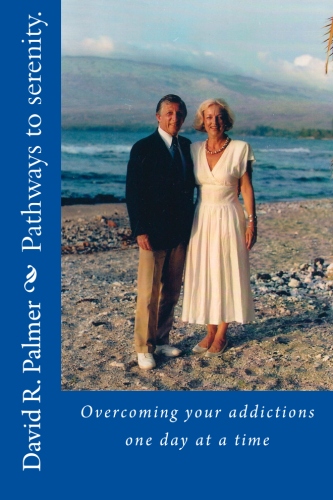Why teenagers get in trouble and how four of them got out.
By David Marcus
(Houghton Mifflin)
“Something began to churn inside Burns. It was a raw mixture of rage and fear and guilt—he didn’t know what to call it, but it was so intense that his heart pounded wildly. He felt dizzy. As he read, he lost count of how many sexual partners Mary Alice had during the month she’d kept the diary. Mary Alice herself couldn’t keep track.”
In this illuminating and thoroughly engrossing non-fiction book about troubled teens, Pulitzer prize winning author David Marcus introduces us to one of the main characters, 16-year old Mary Alice, through the anguish of her father, Burns Chambliss, who stumbles across her diary while waiting for her to come home late one night.
Datelined Santa Fe, New Mexico, the diary entry chronicled an early summer church trip. The first paragraph read, “The ride here was 19 hours. I bought an ounce of weed and was high beyond my mind the whole time.”
More Drugs
In addition to the multiple sex partners, Mary Alice also listed at least seven other drugs she had taken—including acid, cocaine, nitrous oxide, ecstasy, painkillers and mushrooms—and described a short field trip during which she had her tongue pierced. She later removed the stud because her tongue swelled up from the interaction with alcohol and drugs.
When he laid aside the diary, “Burns,” Marcus writes, “kept thinking one thing. They had failed.”
Swift River
With this as prologue, Marcus takes us to the “Academy at Swift River,” a private college preparatory therapeutic boarding school in the foothills of the Berkshire mountains of western Massachusetts, part of the larger Aspen Educational Group, which administers a number of these boarding schools.
There the reader will spend more than a year with him and the 12 members of peer Group 23 as they proceed through a 14-month program specializing in educating troubled teens struggling with behavioral, emotional or academic problems.
For parents and grandparents looking for answers, Swift River offers a pricey solution—$70,000 for the 14 months—and there are no guarantees because there are no detailed follow-ups. But there is some hope.
One staff member, Marcus reports, “estimated the success rate at 10-80-10. Ten percent of the kids soared; eighty percent stumbled back into trouble but ultimately managed to get on with their lives. The remaining ten percent ended up the way they’d started out—drifting, isolated or strung out on drugs.
Rudy Bentz, the administrator at Swift River when Marcus was writing his book, oversaw a staff of about 20 counselors and four supervisors, one for each phase of the program which Marcus describes as a “psychological scavenger hunt.”
Marcus goes on to say, “Rudy described the typical admitted kid as a bright, underachieving 14 to 17 year old with very low self-esteem and few close friends. About 60 percent of the students regularly took drugs or drank; at least a third of those kids were addicts or addiction prone. About 20 percent had police records for offenses ranging from vandalism to drug possession.
“Seventy percent had psychiatric issues such as depression, ADD-ADHD, ODD, OCD (obsessive compulsive disorder). PTSD (Post-traumatic stress disorder), bi-polar disorder or anxiety disorder—and often a combination of one or more because the conditions frequently overlapped.”
Group 23
Most of the book focuses on Group 23 and primarily four of its members—Mary Alice Chambliss, Bianca Pittman, D.J. Pandowski, and Tyronne Harriston—and their journey through the program and out the other side.
It is fascinating and full of drama testifying to the journalistic enterprise of Marcus, who spent four years researching and writing the book. To do the research, Marcus left his job, sold his house, and moved his family to Swift River.
He camped out with the students in the wilderness, joined them in group therapy and traveled with them to the rain forest of Costa Rica in a community service program. Along the way, he saw firsthand how the teenagers and their parents came to grips with their mistakes, a process he describes as getting “a Ph.D. in parenting.”
Mary Alice, described at the time of her admittance by Benz as “an emotional terrorist” who had hijacked the safety of her family and had also endangered herself by repeatedly bingeing and purging, is perhaps the most charismatic of the four teenagers.
Marcus writes, “Rudy had taken one look at her—an emaciated waif with listless eyes, blond hair dyed even blonder, brand-name clothes reeking of cigarettes—and he’d almost blurted, this girl looks ready to die.”
We are also introduced to 16-year old Bianca Pittman, who is escorted from her west Palm Beach home by Swift River representatives. They catch her unawares and are exposed to a temper tantrum of operatic proportions which continues up to their arrival at the airport where she attempts to persuade bystanders, unsuccessfully, that she is being kidnapped.
In making her goodbyes, Mary Alice persauades her parents to throw a party for her which turns into an orgy fueled in part by cocaine ingeniously funded by Mary Alice who buys three Play Station sets at Toys ‘R’ Us with her parents creidit card, hocks them at a pawn shop for $100 and makes the cocaine buy.
Damien John (D.J.) Pandowski is a short, skinny, sullen 15-year-old who, upon his arrival, is wearing baggy pants around the knees with five rings on his fingers. He has reluctantly, at his partents’ insistance, shed the customery chain and padlock around his neck. D.J., who lives in New Jersey, is adopted Tyrone, 16, is black, doesn’t use drugs or carry weapons and has been raised by his mother in a Queens, N.Y. apartment. He is depressed and passive and constantly dissappointed by an absentee father.
The teenage mind
Other members of the group, including Andy, Willow, Tanner and Trevor, play a part in the odyssey and one—Tanner—comes to a bad end. They all help the reader to understand the teenage mind and motivations, more perhaps than they ever had before, and that is of significant value.
There are also important lessons to be learned by parents, who are involved in the process of recovery, about their own behavior. Sometimes they are demonstrably culpable, sometimes not, but there is always room for improvement.
The program of recovery at Swift River calls upon mostly traditional psychological therapies promoting self examination, behavior modification, and taking responsibility. When the 14 months are up, the kids may not have it all together and are vulnerable to falling back into old patterns, but they know what is going on. They are more grown up and more approachable.
At the outset Marcus set for himself the task of answering three basic qeustions:
• Why had the kids gotten into so much trouble at home and at school even as their friends and siblings thrived?
•How could the families have helped earlier?
•What lessons can the rest of us—parents, teachers, religious leaders, lawmakers—draw from a fourteen-month program that most people can’t afford?
He has succeeded in providing answers in this meticulously researched book, and, if you are the parent or grandparent of a teenager, they are worth your consideration.
The book has been recommended by People magazine, Reader’s Digest, Psychology Today, the Atlanta Constitution, the Dallas Morning News and other publications. Marcus has also been a guest on NBC’s Today Show and NPR’s Talk of the Nation and was a featured speaker at the MidSouth Summer School at the University of Arkansas at Little Rock.



